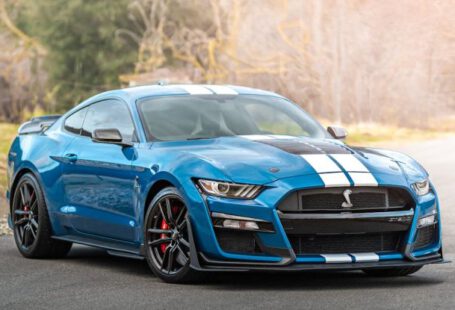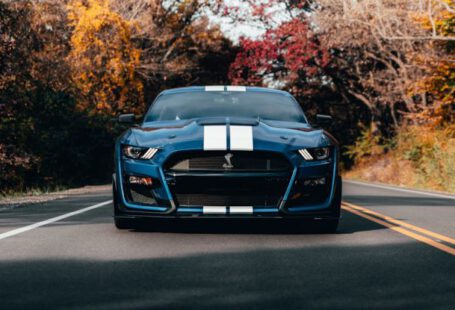The Ford Mustang is a legendary American muscle car that has captivated automobile enthusiasts since its inception. With its iconic design and powerful performance, the Mustang has become a symbol of American automotive excellence. Let’s delve into the fascinating history of the Ford Mustang and explore how it has evolved over the years.
**Origins and Launch**
The Ford Mustang made its debut on April 17, 1964, at the New York World’s Fair. It was introduced as a “pony car,” a term coined by Ford to describe a compact, stylish, and affordable sports car. The Mustang was an instant hit, with over 22,000 units sold on the first day of its release. Its combination of sporty aesthetics and accessible pricing made it a standout in the automotive market.
**Design and Evolution**
The early Mustang models, often referred to as the “first generation” or “1964-1/2 to 1973 models,” featured a sleek and distinctive design that set them apart from other cars of the era. The fastback roofline, long hood, and short deck gave the Mustang a distinctive look that resonated with consumers. Over the years, the Mustang underwent several design changes, with each iteration pushing the boundaries of style and performance.
In 1967, the Mustang received a major redesign, known as the “second generation” or “1967 to 1973 models.” The body became longer and wider, and the car adopted a more aggressive stance. The addition of the iconic “Shelby” models, created in collaboration with Carroll Shelby, further cemented the Mustang’s reputation as a high-performance vehicle.
The 1970s saw the introduction of the “third generation” Mustang, which featured a more aerodynamic design and smaller dimensions. This era also marked the debut of the Mustang II, a smaller and more fuel-efficient version of the car that catered to the changing market demands of the time.
**Performance and Innovation**
Throughout its history, the Ford Mustang has been synonymous with high performance and cutting-edge technology. The introduction of the Mustang GT in the 1980s ushered in a new era of performance-driven models that appealed to speed enthusiasts. The Mustang’s V8 engines and advanced suspension systems made it a favorite among drag racers and street racers alike.
In the 2000s, Ford introduced the “New Edge” design language to the Mustang, giving it a more modern and aggressive look. The addition of features like independent rear suspension and electronic stability control further enhanced the Mustang’s performance capabilities, making it a formidable competitor in the sports car market.
**Legacy and Impact**
Over the years, the Ford Mustang has left an indelible mark on the automotive industry and popular culture. Its appearances in movies, TV shows, and music videos have solidified its status as a cultural icon. The Mustang’s loyal fan base, known as “Mustang enthusiasts,” continues to grow, with car clubs and events dedicated to celebrating the car’s legacy.
**In Retrospect**
The Ford Mustang’s journey from its humble beginnings to its current status as a powerhouse in the automotive world is a testament to its enduring appeal. With each new model year, the Mustang continues to push the boundaries of performance, design, and innovation, ensuring that it remains a beloved classic for generations to come.





